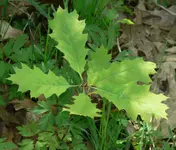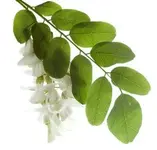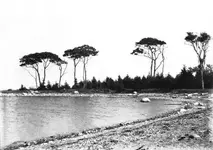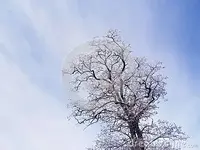Raparee
Hero Member
- Joined
- Feb 18, 2016
- Messages
- 657
- Reaction score
- 670
- Golden Thread
- 0
- Location
- Nova Scotia
- Primary Interest:
- All Treasure Hunting
Characteristics of Acacia leaves, as per Britannica.com:
"Acacias’ distinctive leaves take the form of small finely divided leaflets that give the leafstalk a feathery or fernlike (i.e., pinnate) appearance. In many Australian and Pacific species, the leaflets are suppressed or absent altogether, and the leafstalks (petioles) are flattened and perform the physiological functions of leaves. The leafstalks may be vertically arranged and bear thorns or sharp curved prickles at their base. Acacias are also distinguished by their small, often fragrant flowers, which are arranged in compact globular or cylindrical clusters. The flowers are usually yellow but occasionally white and have many stamens apiece, giving each one a fuzzy appearance. The fruits are legumes and are highly variable in appearance, depending on the species. Acacias are often confused with members of the closely related genus Mimosa."
So of the 800 or so species of acacia, their leaves come in two forms; the pinnately compound leaf that I showed above, or as a flattened leafstalk. Neither form can be confused with an oak leaf.
Cite your source. If it is the case (and it isn't), how is it relevant to anything? Your theory was that an African species of acacia was planted on Oak Island, and was confused as being an oak.
White oak -- not present in NS according to any range map I have seen, nor have I seen white oak in NS in all my years of forestry field work in the province.
Scarlet oak -- not native to NS.
Black oak -- not native to NS.
Pin oak -- not native to NS.
... but all that is irrelevant, because regardless of the species of oak, no one is confusing it with an acacia.
"Acacias’ distinctive leaves take the form of small finely divided leaflets that give the leafstalk a feathery or fernlike (i.e., pinnate) appearance. In many Australian and Pacific species, the leaflets are suppressed or absent altogether, and the leafstalks (petioles) are flattened and perform the physiological functions of leaves. The leafstalks may be vertically arranged and bear thorns or sharp curved prickles at their base. Acacias are also distinguished by their small, often fragrant flowers, which are arranged in compact globular or cylindrical clusters. The flowers are usually yellow but occasionally white and have many stamens apiece, giving each one a fuzzy appearance. The fruits are legumes and are highly variable in appearance, depending on the species. Acacias are often confused with members of the closely related genus Mimosa."
So of the 800 or so species of acacia, their leaves come in two forms; the pinnately compound leaf that I showed above, or as a flattened leafstalk. Neither form can be confused with an oak leaf.
The Bur Oak was native to Oak Island and there are still species of this Tree on the Mainland.
Cite your source. If it is the case (and it isn't), how is it relevant to anything? Your theory was that an African species of acacia was planted on Oak Island, and was confused as being an oak.
White oak -- not present in NS according to any range map I have seen, nor have I seen white oak in NS in all my years of forestry field work in the province.
Scarlet oak -- not native to NS.
Black oak -- not native to NS.
Pin oak -- not native to NS.
... but all that is irrelevant, because regardless of the species of oak, no one is confusing it with an acacia.
















